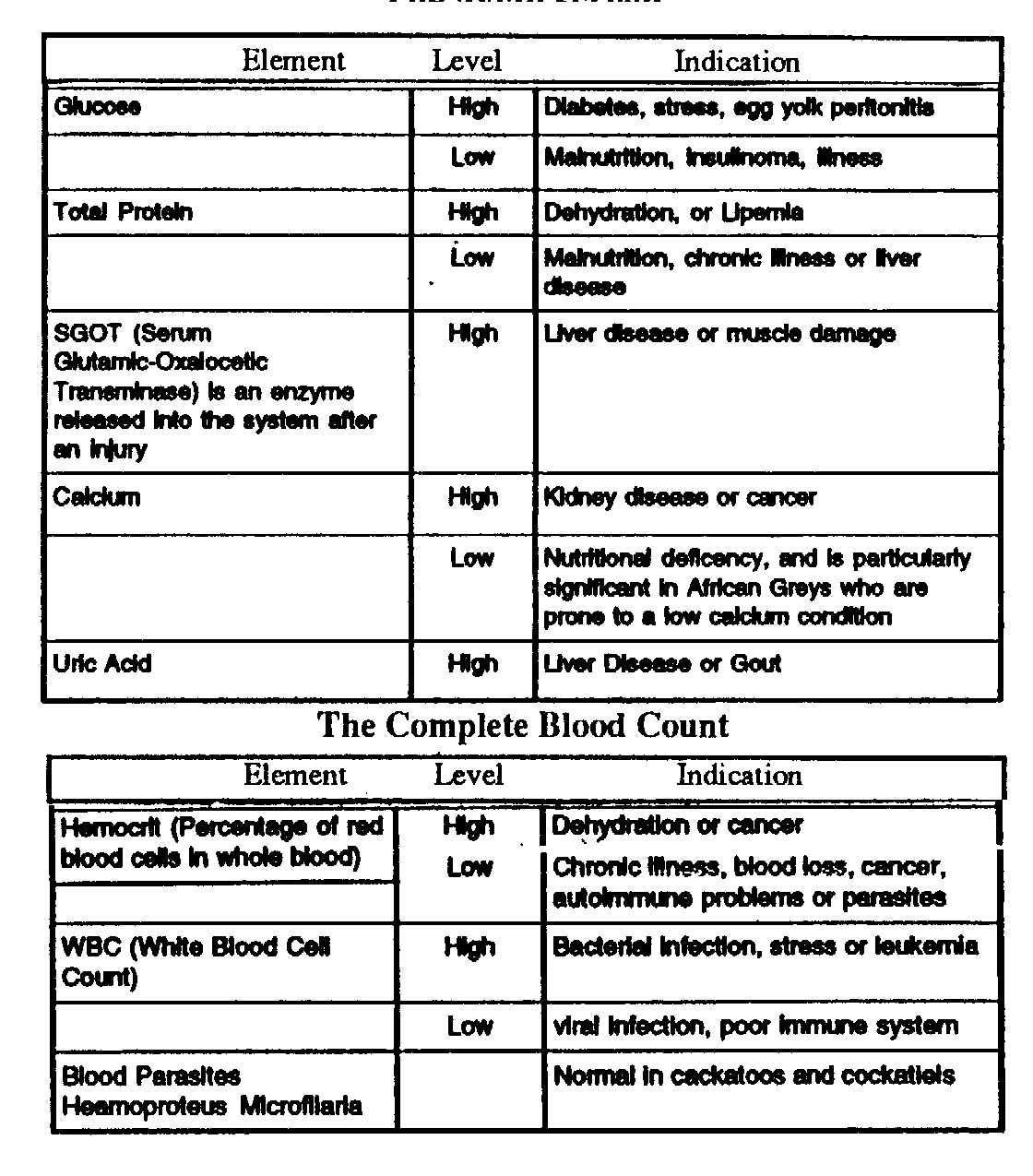Your handy Reference to New - purchase Exams
by Jeffrey Krasnoff, DVM, MS, Brookville Animal Hosp.,
691 Glen Cove Rd. Glen Head, N. Y. 11545*
The bird seller's vet check policy should allow the practitioner
adequate time to get all tests back. When a sale is conditional on vet
check results, 24 hours is inadequate since some tests take longer for
results to be returned [from labs]. New purchase exams should include
the following tests, with the most necessary tests being listed first:
Culture & Sensitivity tests when oral, give a picture of the bird's
overall respiratory condition, and when cloacal, give a picture of
many of the bird's major anatomical systems. The tests help diagnose
such bacterial infections as E. coli and Pseudomonas, yeast infections
such as Candida and fungal problems like Aspergillosis.
Psittacosis tests are used to diagnose Chlamydiosis, which is also
known as Psittacosis, parrot fever and Omithosis (when the disease is
exhibited in non-psittacine species.) This is a zoonotic disease which
means that birds can transmit it to people & vice versa (although
people-to-bird route is unlikely). Two kinds of psittacosis tests:
- a blood titer, detects antibodies in the blood.
- fecal test, which searches for antigens in the fecal matter.
The fecal test often gives false negatives and false positives.
Psittacine Beak & Feather Syndrome (PBFD) tests are interpreted
by the avian practitioner in relationship to the bird's physical
condition.
- A positive test result on a bird showing physical symptoms will
be interpreted as positive for the disease.
- A negative test result on a bird without physical symptoms will
be interpreted as negative for the disease.
- A positive result on a bird without symptoms will require the
bird to be retested in 3 weeks.
- A negative result on a bird showing physical symptoms will require
a retest in 3 weeks.
Birds which are positive for PBFD should be kept isoated from
all other birds. Their owners should refrain from contact with other
birds. With good supportive care, Krasnoff feels, the birds can often
live for a long while with good quality of life, and feels that
echinacea (a herbal remedy) is helpful in extending the quality of
life.
Polyomavirus test is done with a cloacal swab of feces. All
multiple bird owners should have new birds tested. Birds
most at risk are young birds from 2 to 6 months old. Most
birds showing signs will die within 24 to 48 hours. A
symptom of this disease is subcutaneous hemorrhages.
Avian Screen/Complete Blood Count give a picture of the
general health of the bird. It is important to establish base
line values for future use in diagnosis of any problems.
Blood samples may be drawn from the jugular vein, wing
vein, medial metatarsal vein, heart or toenail.
Xrays can be used io locate any granulomas (walled off
abscesses) and to check the condition of the bone structure,
which might determine if the bird has been on an adequate diet or not.
Various specific tests:Mycoplasma, Aspergillosis, Pacheco's,
Pox virus, Newcastle's virus

Gram stain (oral/cloacal) is done on oral or cloacal smears.
A dye is used to determine if gram negative bacteria are
present in significant quantities. The overall condition of the
bird determines if medication is required for any gram nega-
tive bacteria discovered.
Fecal exam There are two separate parts to a fecal exam:
- the float is used to diagnose endoparasites such as
capillaria, coccidia, tapeworms, etc.
- the direct smear is used in diagnosis of giardia, tfichomonas,
etc.
The avian Screen

 Back to Home Page
Back to Home Page




